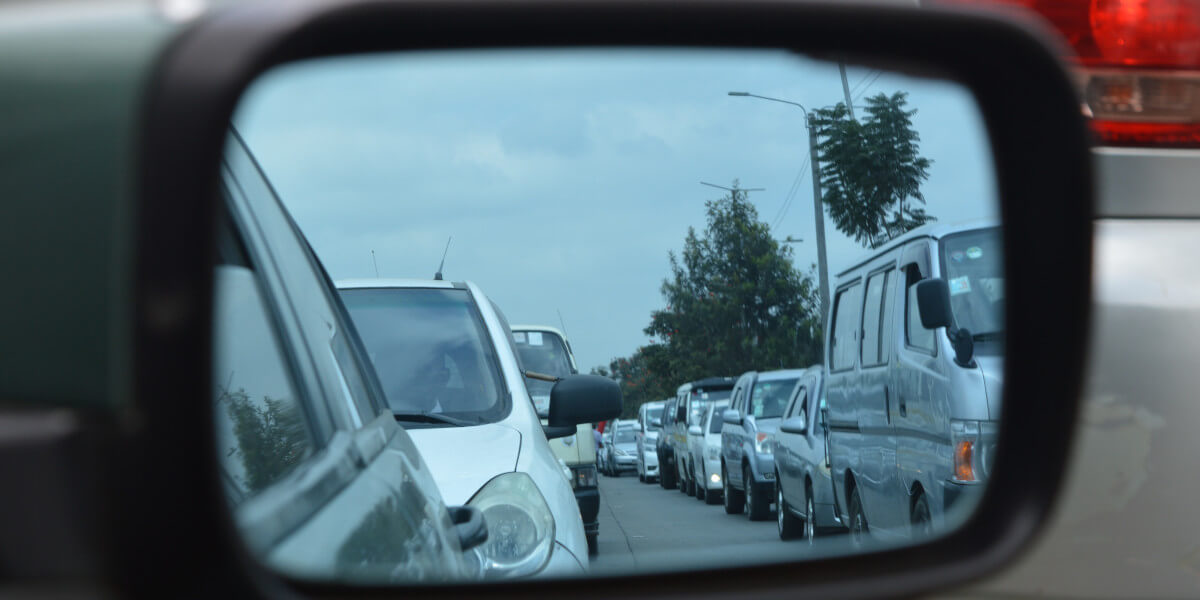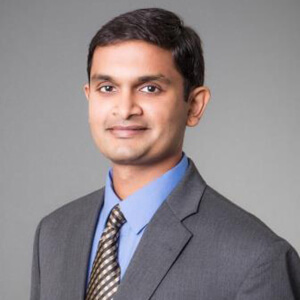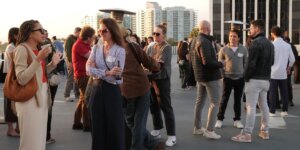
A USC Viterbi researcher hopes to put urban traffic woes in the rearview mirror.
It’s the peak of morning rush hour in Los Angeles, and USC Viterbi School of Engineering professor Ketan Savla is thinking about traffic. He’s stuck in the queue of cars headed north on Vermont Avenue waiting to cross the intersection at Exposition Boulevard. Traffic is so backed up that the line of idling vehicles extends south for about half a mile, all the way to Martin Luther King Jr. Boulevard.
As his Toyota Prius inches toward the stoplight, he’s frustrated — but imagining solutions. “If only the traffic lights at those intersections were timed [to be] consistent with traffic demand in different directions,” he muses.
Savla’s research is aimed at turning this daydream into reality. He’s developing novel ways to make traffic-control infrastructure like stoplights and freeway onramp meters more responsive to citywide traffic fluctuations, with an eye toward preventing these kinds of bottlenecks.
“I’m designing algorithms to improve efficiency,” says Savla, who is the John and Dorothy Shea Early Career Chair in Civil Engineering and Associate Professor of Civil and Environmental Engineering, Electrical and Computer Engineering, and Industrial and Systems Engineering. “I want to decrease the travel time that folks have when they commute.”

Professor Ketan Savla designs algorithms to optimize the flow of traffic.
Easing traffic congestion is important to Savla because of the myriad ways it can benefit people (less road rage, more time for other pursuits) and the planet (fewer carbon emissions from tailpipes). Traffic efficiency “touches almost all aspects of our lives,” he says.
A cross-town conversation
“Smart” stoplights and freeway onramp meters are already in use in Los Angeles and many other cities across the country and the world. They employ cameras and magnetic sensors in the road to monitor the volume of cars in their immediate vicinities, and remote computers adjust green- and red-light times accordingly.
But these signals and meters typically don’t “talk” to one another about what’s going on blocks or miles away. “It’s a very myopic way of controlling traffic,” notes Savla — one he thinks can be smarter.
In a large metropolis like Los Angeles, which has upwards of 4,000 intersections and a dozen freeways, one traffic incident can cause slowdowns in multiple traffic streams. To make the roadways more resilient to disruption, “You need to look at what’s happening downstream and upstream,” he says. “You want to coordinate what you’re doing at all the intersections…because each has an impact on the other.”
Relaying information across such a sprawling network poses a complex computing task. That’s where Savla’s algorithms come in. These computations are designed to optimize the way a city’s computer software system handles the deluge of ever-changing data from traffic-control infrastructure and makes citywide decisions.
The following simulation illustrates the advantages of Savla’s “closed-loop” system, which changes traffic signal timings in response to real-time traffic, over an “open-loop” system, in which stoplights change at fixed times.
Accelerating to the future
Savla envisions a future of “movement orchestration,” where a coordinator system based on such algorithms will coordinate not only traffic infrastructure, but also vehicles themselves. He notes that almost all new vehicles have the ability to send and receive data, and fully autonomous (self-driving) cars are on the horizon. These technologies may one day make it possible for a coordinator system to guide vehicles to slow down or speed up in a synchronized manner to improve traffic flow.
“The vision is the transportation system will be a complete end-to-end service system,” says Savla, one in which autonomous cars and buses will whisk you to your destination. “You will decide your pick-up and drop-off location and your desired time, and all the details [like route, speed, etc.] will be worked out by the system.”
He acknowledges that this may not come to fruition in his lifetime, pointing out that technology will likely advance faster than people’s trust in it.
But he’s already begun implementing his traffic signal-control algorithms in several cities, including Fremont and Long Beach in California, as well as Denver, Colorado. He now has real-world proof that these algorithms improve stoplight coordination.
He’d like to see Los Angeles adopt them, too. Savla began proposing changes to the city’s software in 2013, but progress in the city can be slow. The current traffic-control system was designed before the 1984 Olympics. “You need a major event on the scale of the Olympics [which LA will host again in 2028] to move the needle,” he says.
Translation: As Savla idles on Vermont Avenue, he’s waiting for a green light — not just to cross Exposition Boulevard, but to improve the commutes of millions of Angelenos, including his own.
Published on November 30th, 2022
Last updated on November 30th, 2022













